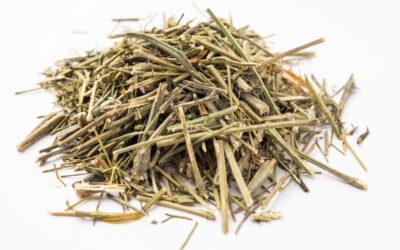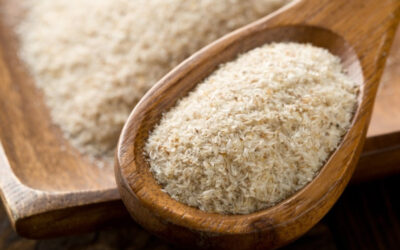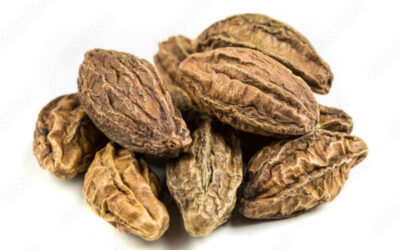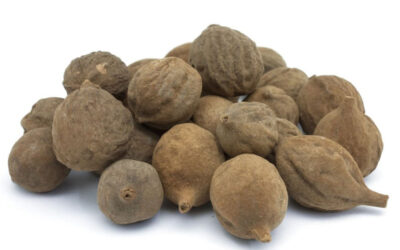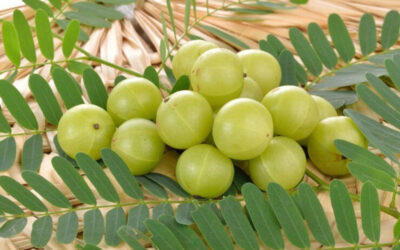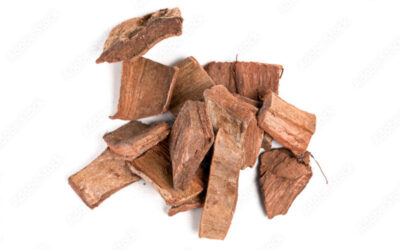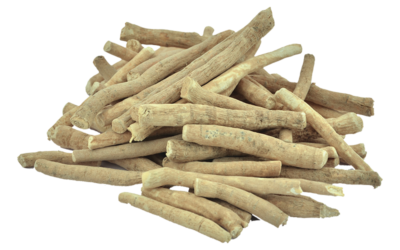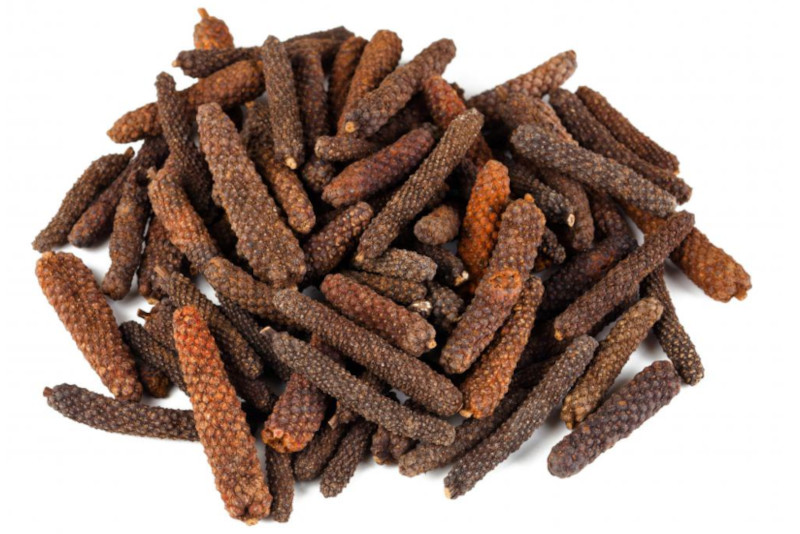
As a top source for wholesale long pepper export, we provide high-quality Piper longum, native to Southeast Asia and commonly found in India.
Available in 5 and 25 Kg packs
Product Details
Origin: Long pepper or pippali (Piper longum) is native to Southeast Asia and is commonly found in India.
Production: India is the largest producer of long pepper (Piper longum). The climatic conditions of India are conducive to the cultivation of long pepper, contributing to India’s prominence as the largest producer.
Name: English: Long pepper, Sanskrit: Pippali, Hindi: Pipal, Magadhi, Bengali: Pipul, Telugu: Pippallu, Tamil: Thippili, Malayalam: Thippali, Kannada: Hippali, Marathi: Pimpli, Gujarati: Pipli, Oriya: Pippoli, Assamese: Pipoli, Punjabi: Pipal, Urdu: Filfil Daraz, Indonesian: Lada Panjang, Malay: Lada Panjang, Thai: Dee Piper, Laotian: Dee, Vietnamese: Ðinh Hương, Burmese: Payè Thee, Khmer: Khreav, Lao: Nhoi, Tagalog: Pahuyas, Sinhala: Thippili
Nomenclature: The scientific nomenclature of long pepper is Piper longum and breakdown of the botanical name Genus: Piper and Species: longum refers to the long, slender shape of the pepper spikes. It distinguishes this particular species within the Piper genus.
Brief History:
Long pepper (Piper longum) has a rich history that spans centuries and has been used for various purposes, including culinary, medicinal, and trade. It’s been used in traditional Ayurvedic medicine in India for over 2,000 years. It is mentioned in ancient Ayurvedic texts as a spice with medicinal properties, believed to aid digestion, respiratory issues, and other health conditions. Long pepper was a valuable spice in the ancient spice trade routes. It was traded along with other spices like black pepper, cinnamon, and ginger. The 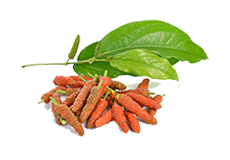 demand for long pepper contributed to the development of trade networks connecting Asia, the Middle East, and Europe. Long pepper was widely used in medieval European cuisine, and it was one of the most sought-after spices during the Middle Ages. It was used to flavor food and preserve meats. However, its popularity in Europe declined with the introduction of black pepper, which was easier to cultivate and transport. In addition to its use in traditional medicine, long pepper has cultural significance in various Asian cuisines. It is still used today in certain regional dishes in India, Indonesia, and other parts of Southeast Asia. Over time, the popularity of long pepper diminished in many parts of the world, and it became less commonly used compared to black pepper. This decline was influenced by factors such as changes in culinary preferences, trade routes, and the availability of other spices. Long pepper has experienced a revival in interest in recent years, particularly in the context of the global exploration of diverse and unique flavors. Some chefs and food enthusiasts have rediscovered long pepper, appreciating its distinct taste and incorporating it into modern culinary creations. Today, long pepper is available in specialty spice stores, and its use extends beyond traditional medicine to various culinary applications. While it may not be as widely used as black pepper, it continues to have a place in certain regional cuisines and among those who appreciate exploring and experimenting with different spices.
demand for long pepper contributed to the development of trade networks connecting Asia, the Middle East, and Europe. Long pepper was widely used in medieval European cuisine, and it was one of the most sought-after spices during the Middle Ages. It was used to flavor food and preserve meats. However, its popularity in Europe declined with the introduction of black pepper, which was easier to cultivate and transport. In addition to its use in traditional medicine, long pepper has cultural significance in various Asian cuisines. It is still used today in certain regional dishes in India, Indonesia, and other parts of Southeast Asia. Over time, the popularity of long pepper diminished in many parts of the world, and it became less commonly used compared to black pepper. This decline was influenced by factors such as changes in culinary preferences, trade routes, and the availability of other spices. Long pepper has experienced a revival in interest in recent years, particularly in the context of the global exploration of diverse and unique flavors. Some chefs and food enthusiasts have rediscovered long pepper, appreciating its distinct taste and incorporating it into modern culinary creations. Today, long pepper is available in specialty spice stores, and its use extends beyond traditional medicine to various culinary applications. While it may not be as widely used as black pepper, it continues to have a place in certain regional cuisines and among those who appreciate exploring and experimenting with different spices.
Physical Properties:
The physical properties of long pepper (Piper longum) include various characteristics related to its appearance, structure, and composition.
Shape and Size: Long pepper has slender, elongated spikes or catkins. The spikes can range in length from about 2 to 5 centimeters.
Color: Long pepper spikes can have varying colors, including green, yellowish-brown, or reddish-brown, depending on their maturity and processing.
Texture: The texture of long pepper is relatively firm when fresh. When dried, it becomes hard and can be ground into a coarse powder.
Aroma: Long pepper has a distinct aroma, which is often described as pungent, earthy, and slightly sweet.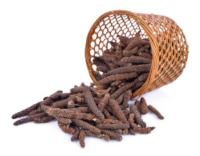
Flavor: The flavor profile of long pepper is unique, with a combination of pungency, mild sweetness, and a hint of heat. It differs from the flavor of black pepper.
Chemical Composition: Long pepper contains various chemical compounds, including piperine, the alkaloid responsible for its pungency. It also contains essential oils and other bioactive compounds that contribute to its flavor and potential medicinal properties.
Culinary Uses: Long pepper is used as a spice in various cuisines, particularly in some Indian and Southeast Asian dishes. It adds a distinct flavor to foods and can be used in both savory and sweet preparations.
Medicinal Properties: Long pepper has been traditionally used in Ayurvedic medicine for its potential medicinal properties. It has been suggested to have digestive, anti-inflammatory, and antimicrobial effects, although scientific research on these claims is limited.
Availability: Long pepper is available in both fresh and dried forms. The dried spikes can be found in specialty spice stores, and both the whole spikes and ground versions are used in cooking.
Understanding the physical properties of long pepper is essential for its culinary and medicinal uses. The unique characteristics of long pepper contribute to its role in traditional practices and its appeal to those seeking diverse and distinctive flavors in their culinary experiences.
Health benefits of Long pepper
Long pepper (Piper longum) has been traditionally used in Ayurvedic medicine for various health purposes. While scientific research on the health benefits of long pepper is ongoing, some potential advantages have been suggested. It’s important to note that individual responses to any substance can vary, and it’s always advisable to consult with a healthcare professional before using long pepper for medicinal purposes.
Digestive Health: Long pepper has been traditionally used to support digestive health. It is believed to stimulate the digestive system and may help in the management of digestive disorders.
Anti-inflammatory Properties: Some studies suggest that long pepper may possess anti-inflammatory properties. The active compound piperine found in long pepper has been investigated for its potential to modulate inflammatory responses in the body.
Respiratory Support: Long pepper has been used in traditional medicine for respiratory conditions. It is believed to have expectorant properties, which may help in managing coughs and respiratory congestion.
Antioxidant Effects: Long pepper contains various bioactive compounds, including antioxidants. Antioxidants help neutralize free radicals in the body, potentially reducing oxidative stress and supporting overall health.
Antimicrobial Activity: Some research suggests that long pepper may exhibit antimicrobial properties. It has been studied for its potential to inhibit the growth of certain bacteria and fungi.
Weight Management: Piperine, a compound found in long pepper, has been studied for its potential role in weight management. It may influence metabolism and the absorption of nutrients, potentially contributing to weight regulation.
Joint Health: Traditional medicine systems, including Ayurveda, have used long pepper for joint health. It is believed to have properties that may support joint function and alleviate discomfort.
Enhanced Nutrient Absorption: Piperine in long pepper has been shown to enhance the absorption of certain nutrients, including curcumin from turmeric. This property is often utilized in traditional formulations to increase the bioavailability of other beneficial compounds.
Nutritional value in 100 grams of Long Pepper
Long pepper (Piper longum) is primarily used as a spice, and its nutritional value is not typically a significant focus since it is consumed in small amounts. However, here is an approximate nutritional breakdown for 100 grams of dried long pepper:
Calories: 343 kcal, Protein: 10.39 g, Carbohydrates: 68.79 g, Dietary Fiber: 20.3 g, Sugars: 0.50 g, Fat: 3.26 g, Saturated Fat: 1.87 g, Monounsaturated Fat: 0.81 g, Polyunsaturated Fat: 0.31 g, Vitamin C: 21.7 mg, Thiamine (B1): 0.04 mg, Riboflavin (B2): 0.24 mg, Niacin (B3): 1.14 mg, Vitamin B6: 0.05 mg, Folate (B9): 11 µg, Vitamin A: 299 IU, Vitamin K: 9.7 µg, Calcium: 435 mg, Iron: 9.58 mg, Magnesium: 152 mg, Phosphorus: 175 mg, Potassium: 1239 mg, Sodium: 44 mg, Zinc: 1.58 mg.
Uses:
Long pepper (Piper longum) has been utilized for various purposes, including culinary, medicinal, and cultural applications. Here are some of the common uses of long pepper:
- Culinary Uses:
- Spice: Long pepper is used as a spice in cooking, particularly in certain regional cuisines in India and Southeast Asia. It adds a unique flavor profile to dishes, characterized by a combination of pungency, mild sweetness, and a hint of heat.
- Seasoning: It is used to season various savory dishes, including curries, stews, and sauces.
- Traditional Medicine:
- Ayurvedic Medicine: Long pepper has a long history of use in Ayurvedic medicine, where it is known as “Pippali.” It has been traditionally used to support digestive health, respiratory function, and joint health. It is also believed to have anti-inflammatory and antimicrobial properties.
- Expectorant: Long pepper is used in traditional medicine as an expectorant, believed to help in relieving respiratory conditions such as coughs and congestion.
- Ayurvedic Formulations:
- Long pepper is often included in various Ayurvedic formulations and herbal remedies, either alone or in combination with other herbs, to address specific health concerns.
- Weight Management:
- The compound piperine found in long pepper has been studied for its potential role in weight management. It may influence metabolism and nutrient absorption.
- Enhancing Nutrient Absorption:
- Piperine in long pepper is known to enhance the bioavailability of certain nutrients, including curcumin from turmeric. This property is often utilized to increase the effectiveness of other herbal remedies.
- Preservative:
- In the past, long pepper was used as a preservative for meat. Its antimicrobial properties were exploited to help prevent spoilage.
- Flavoring Agent:
- Long pepper can be used as a flavoring agent in beverages, including some traditional herbal teas.
- Trade and Commerce:
- Historically, long pepper was a valuable spice in the ancient spice trade routes. It played a significant role in connecting different regions through trade, contributing to cultural exchange and economic development.
